Thanks, Michael. Sorry to take so long in replying. I have been juggling projects with emphasis on the He. 111 and Stuka. I am glad the details look right on the Bf-109s. I feel I am mostly doing corrective stuff, but I am proceeding carefully so the overall finish will look right on both models.
Thanks, Erik. I appreciate the insight on the canopy hinge. I came to the same conclusion looking at the pic in my Squadron Walkaround book but it only shows the inside view of the hinge. As seen below, I had to do some more surgery on the Revell kit to get the area under the Erla canopy to look right. It's finally done and painted and a great relief. Revell sure got that part messed up.
Thanks, Spiros. It's surprisingly fun working with the resin. I have worked out good methods to eliminate resin sanding dust and gluing issues and am getting comfortable with this material, amongst other detailing.
Here is my latest work on the 109s. I did some further mods on the decking under the Erla canopy for the Revell kit. I had to pry off the rear plate and remount it so that the plate was flat and smooth. This meant carving away a lot of the stuff Revell molds in to mount it otherwise.
-

1. The plate sticks out on the Revell kit when the whole back piece should be flush and smooth. So, I pried it off, did some surgery on the mounting pins, reglued and sanded it and repainted.
Filling and sanding were followed by brush painting carefully around the installed harness details. I thought this looked rough, so I decided to mask and airbrush this, which finally looked good.
-
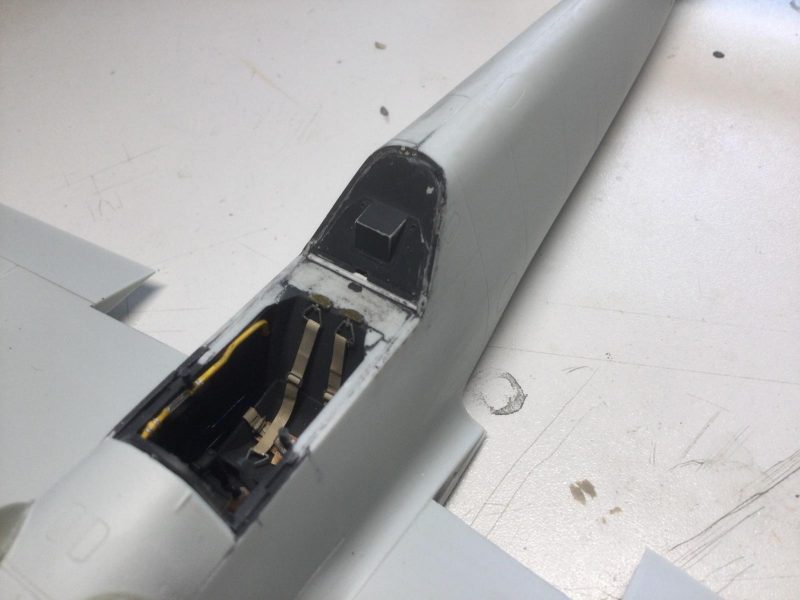
1. Repositioned plate before sanding.
-
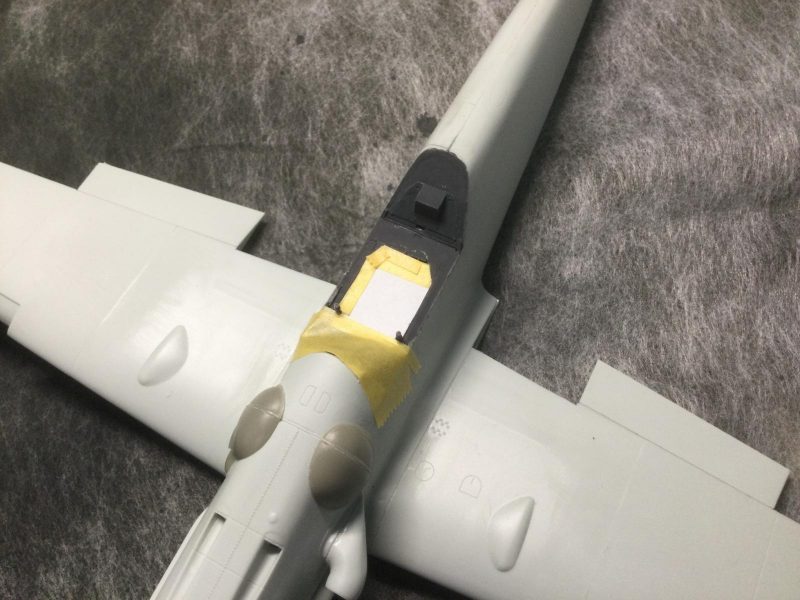
1. Hand painted and masked for further airbrushing
-
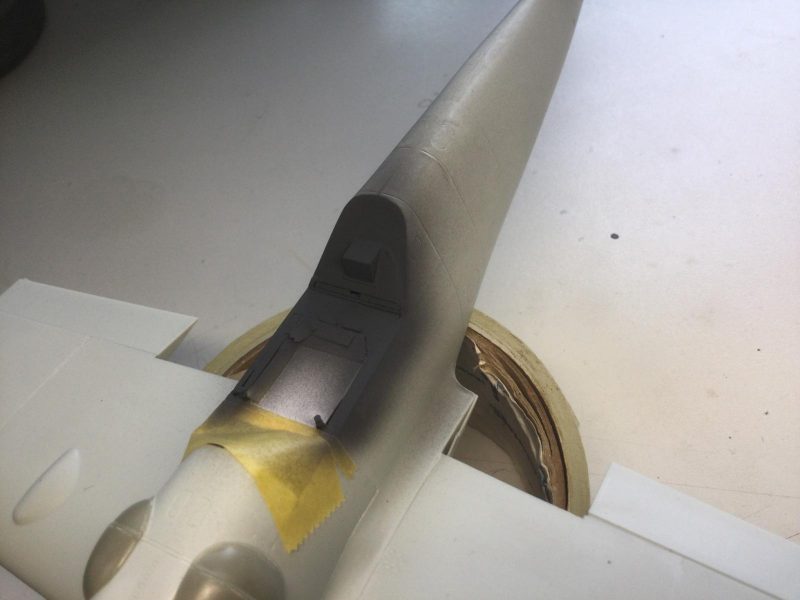
1. Final finish after airbrushing.
On the Revell kit, I also sanded the spinner smooth and eliminated the pesky seam.
-
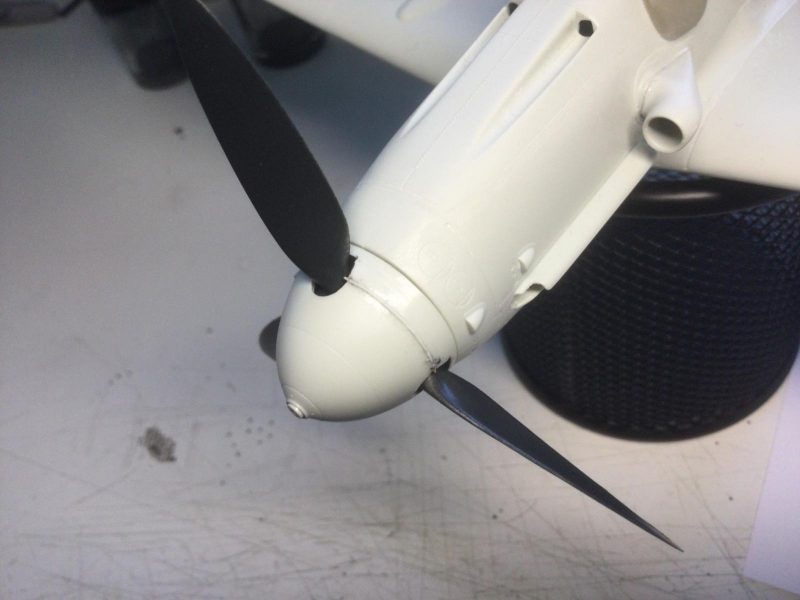
1. Stretched sprue filler.
Since that work, I have concentrated on the Hasegawa build. First of all, I finally did the harness belts, using paper and the metal buckles from the old Eduard set.
I added two more buckles for spares to better match the look of the real thing. I had to trim the canopy components carefully by sanding to get them to fit (very tightly).
-
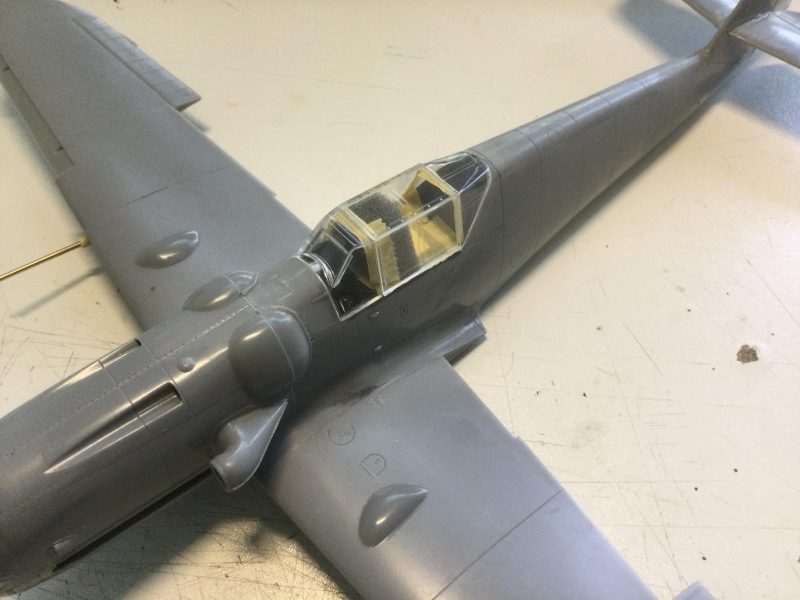
1. Sponge and masking tape to black underspray. I wil redo this because it pushed up the canopy too much while painting.
I elected to use the whole canopy to mask the interior and so proceeded accordingly. With no Eduard mask set, I cut all the mask pieces by hand, using the methods I employed for my Buffalo build.
I started painting today with the RLM 66 canopy framing undercoat.
I also did the first coat of Flat White for the rudder and as an undercoat for the RLM 23 fuselage ID band (I like to do a white undercoat under red to brighten it up). I always do white coats in two sessions because they need to cure each time for good density (acrylics being so thin).
It's nice to get painting. The hinged portion of the canopy lifted a bit while painting but it is masked internally so no underspray danger there. Nonetheless, I will probably remount it after the paint dries so that it fits more tightly. Next up will be the RLM yellow ID panel under the engine as well a s the red and white bits mentioned. All this will be masked before main camo goes on.
It's slow going but worth the extra time to get right. Thanks for looking.